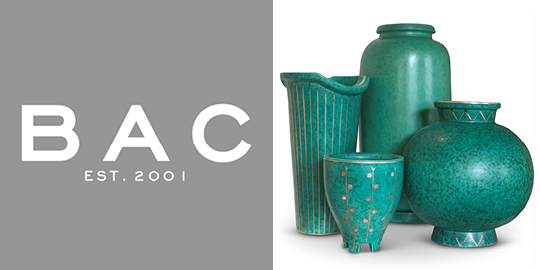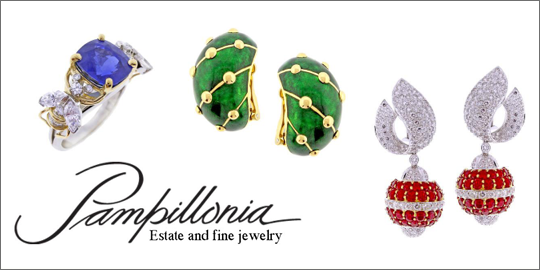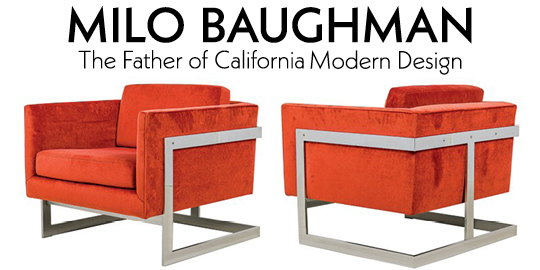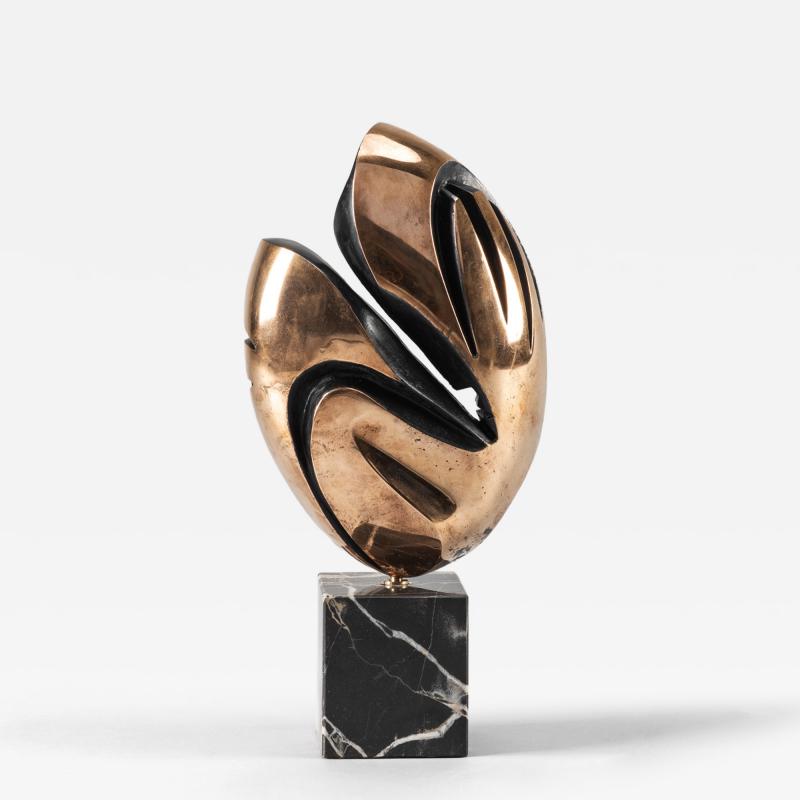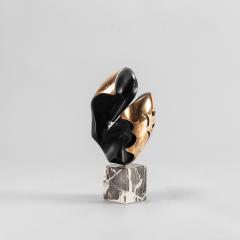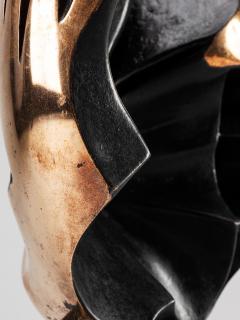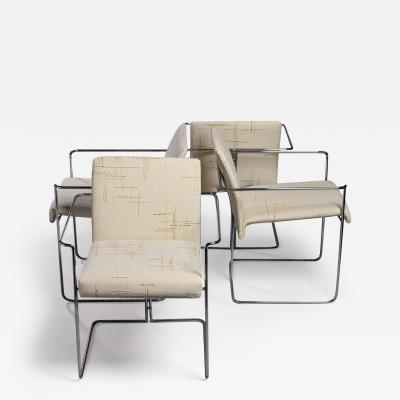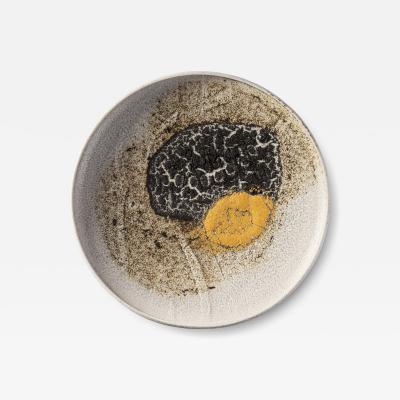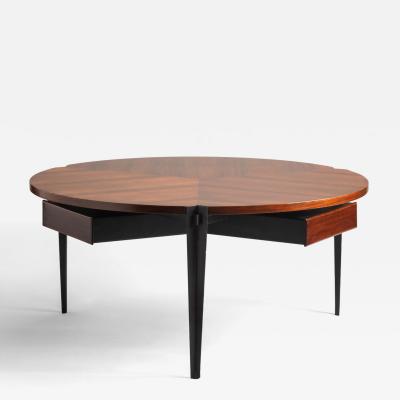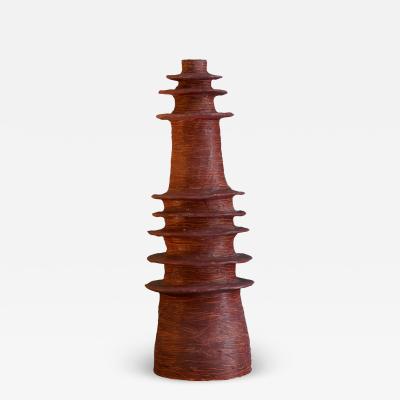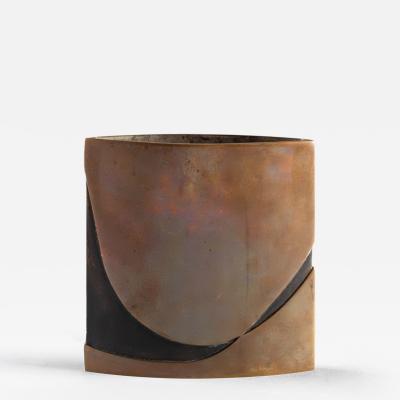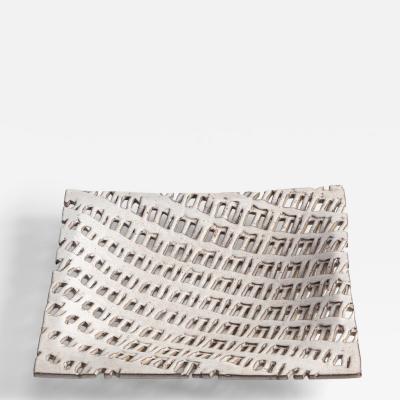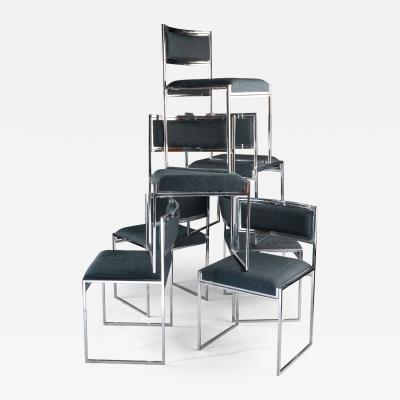Gino Cortelazzo, abstract sculpture in bronze, artist's proof, Italy, 1970s
-
Description
Gino Cortelazzo (1927-1985), abstract sculpture in bronze on a marble base, signed and numbered as artist's proof. The sculpture comes from a private collection in Padova, Italy.
"Gino Cortelazzo was born in Este on October 31, 1927, into a family of landowners who had no intention of supporting his vocation for the visual arts. As a result, he was directed—reluctantly on his part, though not yet openly so—toward agricultural studies. After earning his diploma, Cortelazzo consequently enrolled in the Faculty of Agriculture. He attended only the first year, and without much conviction. However, as a voracious autodidact, he went on to develop a solid humanistic education on his own.
After a brief work experience in South America, he returned to his father's business in 1949 and, not without conflict, began a successful career as a nurseryman.
These are perhaps dubious years, marked by a lack of outward expression of worries and problems but also of profound and definitive maturation. Cortelazzo was a man of extensive and refined reading. His cultural formation, in the immediate post-war period, was influenced by existentialist thought, especially through the narrative works of Sartre and Camus, but he was no less interested in Joyce and Virginia Woolf.
He always ranged with great intuitive capacity from figurative arts to literature; he read Goethe, Musil, loved Kafka and knew Freud deeply although he preferred Jung. At the same time, he was collecting the publications concerning Nicolò di Giovanni Pisano, Jacopo della Quercia, Donatello and Boccioni among the contemporary artists that he considered his ideal masters.
In 1962, almost 35 years old, Gino Cortelazzo, at the height of his success as a nurseryman with a wife and two children, decides to leave everything to enroll at the Academy of Fine Arts in Bologna. A student of Umberto Mastroianni, he graduated in 1967 after becoming one of his favorite students.
In developing his artistic poetics, Cortelazzo sought to observe and engage with the themes permeating Italian society during those years, while consciously resisting the emotional pull and stylistic tendencies of Neorealism.
Yet, immersed in the context of his time, Cortelazzo—however consciously detached—could not remain unaffected by its influences. Indeed, the first work to bring his name to the attention of the art world bore a highly emblematic title: Operaio (Worker).
With Operaio Gino Cortelazzo wins, unexpectedly, as true outsider, the Premio Suzzara 1968. Riding the wave of this success, he began an exhibition season that led him to showcase his work in the major Italian cities.
By that time, the use of bronze had become his own distinctive mark—characteristic of Cortelazzo, which would earn him a respected position in the eyes of the most discerning critics.
In 1970 Raffaele De Grada invites him to teach sculpture at the experimental Academy of Ravenna where Giò Pomodoro teaches applied arts, Luca Crippa painting, Tono Zancanaro engraving and Massimo Carrà art history.
Thus, Cortelazzo is building his own alphabet on his own skin, choosing those akin to him but, above all, rejecting the different — that is, almost everyone. And it is clear that in these works from his early period — over which looms, albeit fruitfully, the shadow of Mastroianni, and behind it, though much more faintly, that of the Futurists — the task of attribution becomes both burdensome and, in some ways, unfair to the artist.
By a strange twist of fate, he encounters the world of high fashion in Milan: Biki, Baratta, Soldano — and he is commissioned to create unique jewelry pieces for the runway shows of their collections.
He is admitted to the most exclusive artistic salons of Milan, but he doesn't resist long and presfers to withdraw to Este. In Milan he meets Dino Buzzati and in Turin Davide Lajolo, with whom he will remain bound by deep friendship.
His need to pursue both aesthetic and ethical exploration — a need that was never fully satisfied by his own life — led him to experiment with every material he encountered and found intriguing;
he never ceases to investigate the possibilities of bronze but also worked stone, alabaster, onyx, during specific periods of time; he had a deep fondness for wood, to which he often returned, as well as for iron — yet he always remained open to experimenting with other materials such as fiberglass, titanium, and aluminum.
His research is highly appreciated by Guido Perocco and Giuseppe Marchiori. The latter becomes a regular visitor to his studio and in 1971 introduces him to Gianni Berengo Gardin who will photograph all of his works for some years.
In 1973, Giuseppe Marchiori presented him at the Cortina Gallery in Milan — an exhibition that remained especially dear to Cortelazzo due to the acclaim it received.
Cortelazzo’s titles are not always strictly indicative of the works to which they are assigned, following — as far as can be understood — more verbal or intuitive suggestions than any declared intentionality or explicit conceptual program. As a sculptor, Cortelazzo understood through material rather than through words, and regarded the title of a work as a laughable simplification. Traces of this view remain in the notes published in the catalogue of the exhibition held at the Querini Stampalia Foundation in Venice, from May to September 1990.
In 1975, the Ca' Pesaro Museum of Modern Art in Venice acquired Cortelazzo’s sculpture Destino. Around this time, his work began to gain recognition also beyond Italy. After meeting him at the Zanini Gallery in Rome that same year, Giulio Carlo Argan played a key role in introducing Cortelazzo to the international art scene, facilitating his entry into the G Gallery in Berlin and exhibitions in Austria. This international exposure would soon extend to France and Latin America as well.
In 1978, he decided to leave teaching in order to devote himself entirely to his intense work of artistic research. He inaugurated his house-studio in Este, created within his father's old farmhouse and redesigned by architect Arrigo Rudi, which becomes a meeting place for artists, intellectuals and art historians as Giuseppe Marchiori, Raffaele De Grada, Davide Lajolo, Riccardo Muti, Giulio Carlo Argan, Palma Bucarelli, Giuseppe Mazzariol, Enzo Fabiani.
During this period, Cortelazzo refined — even in theoretical terms — the concept of indirect figuration, which had formed the foundation of his sculpture since the early 1970s. According to the artist, a work of art must strike the viewer’s psyche, prompting the construction of a personal image — one that may differ from that of another viewer, as it depends on their background, imaginative capacity, sensitivity, and even their psychological state at the time.
The Foglie (Leaves) series in bronze, initiated in the latter half of the 1970s, continued to develop throughout the 1980s. Alongside it, the poetics of cutted surfaces and the sculptural use of light underwent significant refinement, yielding previously unexplored formal and expressive outcomes.
In 1983, he met Giuseppe Mazzariol, marking the beginning of a profound and enduring intellectual companionship.
In that period begins the experimentation of what Gino Cortelazzo called "color". The light effects achieved through the contrasts of gold and black, or through the patinas and gilding of the Leaves, or through the inclusion of voids and hollows in the wooden or iron sculptures, are consciously surpassed by the introduction of a distinctive mixture of colored epoxy resins and quartz crystals as a new sculptural material. “It is not a matter of applying color externally, not the act of attributing color to a surface—which, from Miró to Calder, has been a recurring practice in the sculpture of this century—but rather an inquiry into color as an intrinsic element of the sculptural form itself, aimed at emancipating it from its burdensome physicality”, explained Giuseppe Mazzariol and continued: “It appears to me that the transition toward the use of chromatic elements—painstakingly developed through technological experimentation—positions Cortelazzo in a uniquely singular and highly distinctive place within the contemporary sculptural landscape. It seems, as I have remarked on another occasion, to represent a kind of response to a profound need already present in the final phase of Martini’s work—the more anguished Martini, that of Scultura Lingua mortsa (Sculpture as a Dead Language).”
This last phase of research is characterized by sculptures with naturalistic and landscape-inspired themes, as well as by the monumental scale of the works, some of which reach heights of up to 10 meters (see for instance, the project drowings of 84 354-391 Album M 1984). Particularly emblematic, in addition to the Civette (Owls) series, are Il castello, Luna a Miami, and Luna a Key West—the latter title echoing his admiration for Hemingway and his frequent travels to the United States.
In 1985, Gino Cortelazzo attained a fully mature and distinctly original artistic language, which elicited considerable interest and critical acclaim from the most discerning and informed voices in the field.
The year 1985, with its ups and downs, appeared to progress much like any other. Notably, the early days of November seemed especially auspicious: Cortelazzo received a commission for a ten-meter monument, secured travel arrangements for a forthcoming trip to San Diego, California, in mid-November, and, by the end of the month, was formally invited to participate in the 1986 Venice Biennale.
But none of this would come to pass, for on November 6, 1985, at the age of 58, Gino Cortelazzo unexpectedly chose to take his own life." -
More Information
Documentation: Signed Origin: Italy Period: 1950-1979 Materials: bronze on marble Condition: Good. Creation Date: 1970s Styles / Movements: Modern, Mid Century Dealer Reference #: CAPT1725 Incollect Reference #: 833772 -
Dimensions
W. 5.91 in; H. 11.81 in; D. 3.94 in; W. 15 cm; H. 30 cm; D. 10 cm;
Message from Seller:
Blend Roma, located at Via Margutta 55/b in the heart of Rome, curates unique objects that blend diverse materials, styles, colors, and forms to spark creative dialogue. Guided by instinct and taste rather than rigid rules, our collection offers inventive solutions for those who value originality. Contact us at +39.063.265.2067 or blend@blend.it.








